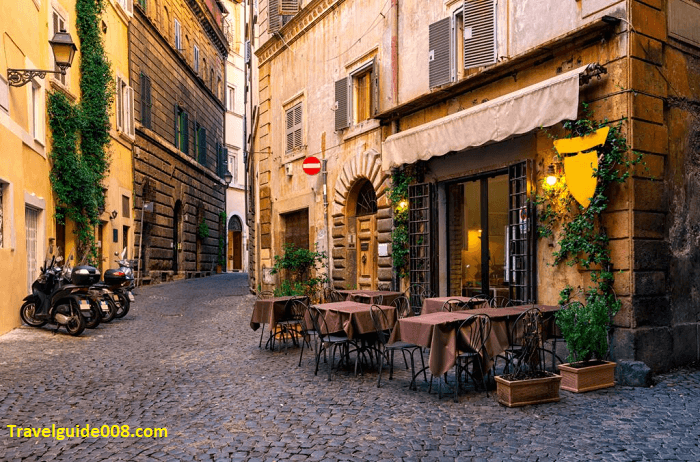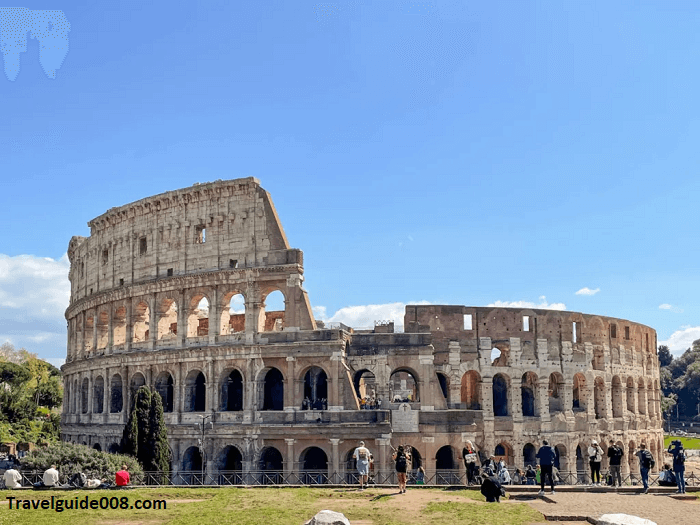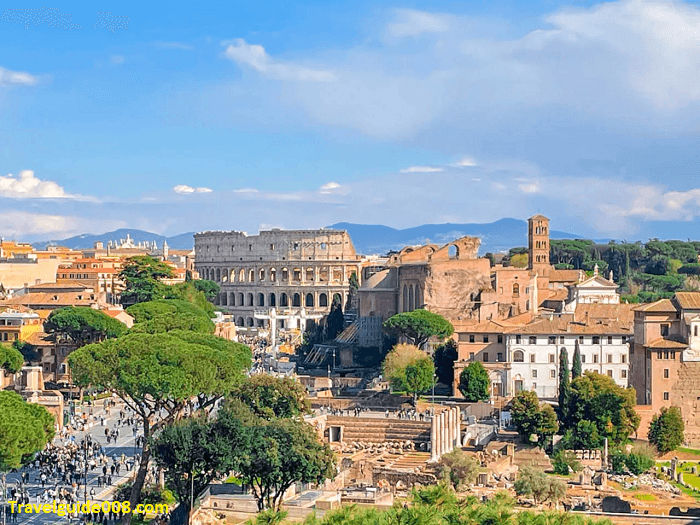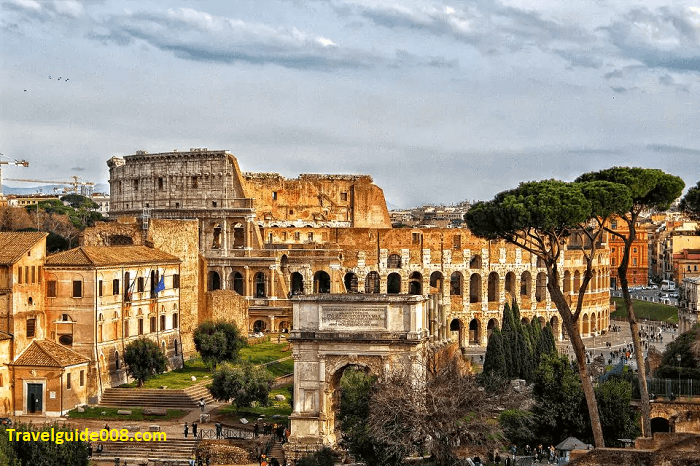Rome Travel Guide: Your Complete Guide to the Eternal City:
Rome, the Eternal City, is a fabric woven from history, art, culture, and food. From ancient ruins to masterpieces of the Renaissance, it beckons travellers to explore its rich story. This travel guide will give you an intensive map to explore the city, helping you make the most out of your trip.
Getting Started: Knowing the Lay of the Land:
Understand its lay out before delving into the highlights of Rome. The city is divided into several districts, each having its own unique character: Centro Storico (Historic Centre): This is the heart of Rome, full of historic landmarks like the Pantheon, Piazza Navona, and the Trevi Fountain.
- Vatican City: An independent city-state home to St. Peter’s Basilica and the Vatican Museums.
- Trastevere: Charming neighbourhood characterised by narrow streets, thrilling nightlife, and typical Roman cuisine.
- Testaccio: A neighbourhood not so much known to tourists, but it is famous for its food and the local markets.
- Monti: This is a fashionable neighbourhood close to the Colosseum, filled with boutiques, cafés, and a bohemian atmosphere.

Rome Getting Around:
The city must be discovered by walk but its public transport system is also efficient here. You could find a complete network of metro, buses and trams in this city. A single ticket provides 100 minutes of travel in all public transports of this city. If you want to travel here without any limitations and also want to get discounts on different attractions, then buy the Roma Pass.
1. Colosseum: A visit to Rome would not be complete without the Colosseum, which is a symbol of the city. This ancient amphitheatre could accommodate 50,000 people and was used for gladiatorial contests. For a tour without a long wait, buy your tickets in advance or book a guided tour that covers access to the Roman Forum and Palatine Hill.
2. Roman Forum: The Roman Forum was a public place in ancient Rome that accompanied the Colosseum. You can almost hear the echoes of history as you walk through the ruins. Highlights include the Temple of Saturn, the Arch of Titus, and the Curia, where the Senate once convened.

3. Vatican City: Any traveller to Vatican City should include this place in their itinerary. Start at St. Peter’s Basilica, one of the architectural jewels of mankind with Michelangelo’s Pietà, and climb up to the dome for breathtaking views of the city. The Vatican Museums, containing a fabulous collection of art, culminate in the stunning Sistine Chapel, famous for Michelangelo’s ceiling.
4. Pantheon: The Pantheon is one of the best-preserved ancient buildings in Rome. A huge dome coupled with an oculus makes the temple seem ethereal. It is free to visit, though one should go there early in the morning to avoid crowds.
 5. Piazza Navona: Piazza Navona is the most beautiful specimen of Baroque architecture—a square boasting stunning fountains, Bernini’s four rivers’ fountain among those. Perfect for people watching, buying gelato, and eating outdoors at one of the outdoor cafés or restaurants in this lively plaza.
5. Piazza Navona: Piazza Navona is the most beautiful specimen of Baroque architecture—a square boasting stunning fountains, Bernini’s four rivers’ fountain among those. Perfect for people watching, buying gelato, and eating outdoors at one of the outdoor cafés or restaurants in this lively plaza.
6. Trevi Fountain: No visit to Rome would be complete without a toss of the coin into the Trevi Fountain. It is said to ensure a return to the city. Be an early riser or go very late at night for a tranquil experience.
7. Trastevere: Cross the Tiber River to Trastevere for lovely cobblestone streets, Santa Maria in Trastevere church, and local trattorias bursting with old-fashioned Roman dishes. In the evening, the neighbourhood really comes alive with the atmosphere emanating from the local bars and restaurants full of inhabitants and tourists alike.
8. Galleria Borghese: Located in the Borghese Gardens, this gallery hosts one of the finest collections of sculptures and paintings by masters like Caravaggio, Raphael, and Bernini. You should call to book ahead.
9. Castel Sant’Angelo: Castel Sant’Angelo, initially built as a mausoleum for Emperor Hadrian, has had almost all types of roles played during its lifetime—from a fortress to papal residence. Take the rooftop for amazing views of Rome and the Tiber River.
10. Campo de’ Fiori: The busy market during the day turns into a nightlife street. Explore it in the morning to pick fresh fruits and local products. Come again during the night for vibrant bars and restaurants.
Gourmet Delights
Foodie Delight
For a food lover, Rome is heaven on earth. You should not miss these culinary delights:
- Pasta alla Carbonara: The Carbonara is a classical Roman dish made up of guanciale, egg, Pecorino Romano cheese, and pepper.
- Pizza al Taglio: Taste the delicious Roman-style pizza available in slices.
- Supplì: Fried risotto balls with mozzarella are yummy snacks.
- Gelato: Try this smooth one at one of the many city’s gelaterias.
- Caffè: Join Italian coffee culture and sip your shot of espresso from the bar.

-
Rome Practical Tips:
1. Best Time to Visit:
The best times to visit Rome are in the spring (April to June) and autumn (September to October), when the weather is lovely and tourist crowds are thinner. Summer gets hot and crowded, while winter sees fewer tourists, but a few attractions operate on reduced hours.
2. Dress Code: While visiting the religious sites, you are expected to dress modestly. Shoulders and knees should be covered.
3. SafetyGeneral Information: Rome is one of the safest cities for tourists; however, like any big city, it has its share of pickpockets. Avoid crowded areas, and keep your belongings close, aware of what’s going on around you.
4. LanguageMany Romans speak English, but basic Italian phrases can enrich your experience and make friends with some locals. Simple greetings and polite words work like magic.
5. Currency: Italy uses the Euro (€). Credit and debit cards are really accessible, but always take cash in small transactions and local markets.

